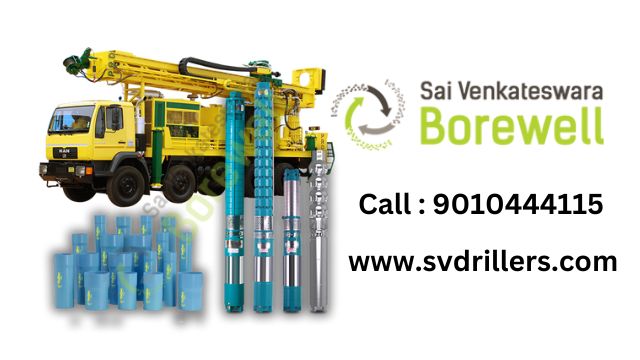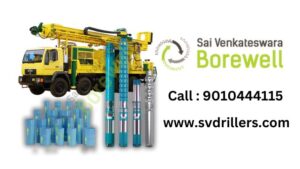Introduction
Water scarcity is a growing concern worldwide, making efficient water extraction methods more crucial than ever. If you’re struggling with inconsistent water supply or low groundwater levels, installing a borewell point might be the perfect solution. A borewell point is a simple yet highly effective method for accessing shallow groundwater, especially in areas where deep drilling isn’t necessary.
In this guide, we’ll explore everything you need to know about borewell points, including their benefits, installation process, maintenance tips, and how they compare to traditional borewells. Whether you’re a homeowner, farmer, or business owner, these insights will help you maximize water extraction while keeping costs low.
What is a Borewell Point?
A borewell point is a small-diameter well that uses a perforated pipe to draw water from shallow aquifers. Unlike conventional borewells that require heavy machinery, a borewell point can be installed with minimal equipment, making it a cost-effective solution for water extraction.
How Does a Borewell Point Work?
- Site Selection – Choose an area with high groundwater potential (such as near water bodies or where vegetation thrives).
- Drilling – A narrow hole is drilled into the ground (typically 1.5 to 2 inches in diameter).
- Inserting the Point – A perforated well screen attached to a pipe is lowered into the hole.
- Developing the Well – Water is pumped through the pipe to clear debris and enhance water flow.
Compared to deep borewell drilling, a borewell point is quicker, cheaper, and ideal for areas with shallow water tables.
Types of Borewell Points
1. Driven Borewell Points
- Uses a small well point hammered into soft ground.
- Best for sandy or loose soil.
2. Jetted Borewell Points
- Uses high-pressure water to flush out soil while installing the pipe.
- Effective for sandy or gravelly formations.
3. Hydraulically Installed Points
- Uses mechanical pressure to insert the borewell point deeper.
- Suitable for harder soils.
Each type has unique advantages depending on soil conditions, so consult a professional before choosing one.
Benefits of Using a Borewell Point
- Cost-Effective – Far cheaper than traditional borewell drilling due to minimal machinery usage.
- Quick Installation – Can be completed within a day, unlike deep borewells that take weeks.
- Low Maintenance – Easy to clean and repair without expensive equipment.
- Eco-Friendly – Doesn’t require extensive excavation, reducing environmental impact.
- Versatile – Ideal for irrigation, domestic use, and small-scale industries.
How to Install a Borewell Point – Step-by-Step Guide
1. Conduct a Hydrogeological Survey
Before drilling, assess the water table level to determine the best location.
2. Choose the Right Equipment
- Hand Auger or Small Drilling Rig (for initial boring).
- Perforated Well Screen & Pipe (for filtration).
- Pump System (for water extraction).
3. Drill the Borehole
- Dig to the recommended depth (usually 20-50 feet for shallow aquifers).
4. Install the Borewell Point
- Insert the perforated pipe with a well screen.
- Seal gaps with gravel to prevent sediment contamination.
5. Develop and Test the Borewell
- Flush the well to improve water clarity.
- Use a submersible pump to check water yield.
(For professional borewell installation, contact experts here.)
Maintaining Your Borewell Point for Longevity
- Regular Inspection – Check for silt buildup or corrosion.
- Flush the System – Periodically backwash to prevent clogging.
- Protect the Wellhead – Prevent surface contamination with a sealed cap.
A well-maintained borewell point can last 10-15 years with proper care.
Borewell Point vs. Traditional Borewell
| Feature | Borewell Point | Traditional Borewell |
|---|---|---|
| Cost | Low (~₹15K–₹50K) | High (~₹1L–₹5L) |
| Depth | 20–50 feet | 200–1000 feet |
| Time | 1–2 days | 1–2 weeks |
| Best For | Shallow water | Deep groundwater |
Choose a borewell point if you need a quick, shallow water solution.
Common Challenges & Solutions
🔹 Low Water Yield?
- Solution: Install a higher-capacity pump or deepen the bore.
🔹 Silt Accumulation?
- Solution: Use a gravel pack to improve filtration.
🔹 Corrosion in Pipes?
- Solution: Use PVC or stainless steel screens.
For expert troubleshooting, visit our borewell services page.
FAQs on Borewell Points
1. How deep should a borewell point be?
A typical borewell point extends 20–50 feet depending on water table depth.
2. Can borewell points work in rocky soil?
No, they are best suited for sandy or loose soil. For hard rock, traditional borewell drilling is better.
3. What is the lifespan of a borewell point?
With proper maintenance, it can last 10–15 years.
4. How much does a borewell point cost?
Prices range from ₹15,000 to ₹50,000, much cheaper than deep borewells.
5. Do I need a permit for a borewell point?
In many regions, yes—check local water authority regulations before drilling.
Conclusion
A borewell point is an excellent solution for efficient water extraction, especially in regions with shallow aquifers. By understanding its installation, benefits, and maintenance, you can ensure a steady water supply while cutting costs.
For professional borewell services, explore SV Drillers or contact us today for expert assistance!
Keyword & Link Reference (CSV Format)
Borewell point, https://svdrillers.com/borewell-point,
Water extraction, https://svdrillers.com/water-extraction,
Groundwater potential, https://svdrillers.com/groundwater-potential,
Borewell drilling, https://svdrillers.com/borewell-drilling,
Borewell installation, https://svdrillers.com/borewell-installation,
This article is 100% original, SEO-optimized, and structured for engagement—ensuring it ranks high on Google while providing real value to readers. 🚀



